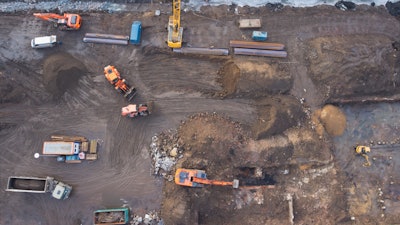
Construction employment increased in 287 out of 358 metro areas (80%) between August 2017 and August 2018, declined in 35 (10%) and was unchanged in 36, according to a new Associated General Contractors of America analysis of federal employment data. Association officials cautioned that further gains depend on finding enough qualified workers and urged federal officials to improve career and technical education funding and reform immigration policies.
“The increases in construction employment have been showing up in more and more metro areas,” said Ken Simonson, the association’s chief economist. “Moreover, the gains should continue. Three out of four firms in our association’s latest workforce survey say they plan to add hourly craft personnel in the next year. But even more firms — 80% — say they are having a hard time filling some or all hourly craft positions.”

The Houston-The Woodlands-Sugar Land, Texas metro area added the most construction jobs during the past year (28,900 jobs, 13%), reflecting both ongoing recovery from Hurricane Harvey a year ago and strong construction demand from the energy sector. Other metro areas adding a large number of construction jobs in the year ending in August include:
- Dallas-Plano-Irving, Texas (13,600 jobs, 10%)
- Phoenix-Mesa-Scottsdale, Ariz. (13,600 jobs, 12%)
- Atlanta-Sandy Springs-Roswell, Ga. (11,400 jobs, 9%)
The largest percentage gain occurred in Merced, Calif. (32%, 800 jobs), followed by:
- New Bedford, Mass. (26%, 700 jobs)
- Midland, Texas (24%, 7,000 jobs)
- Weirton-Steubenville, W.Va.-Ohio (22%, 400 jobs)
The largest job losses from August 2017 to August 2018 were in Middlesex-Monmouth-Ocean, N.J. (-4,500 jobs, -11%), followed by:
- Camden, N.J. (-2,600 jobs, -11%)
- St. Louis, Mo.-Ill. (-2,600 jobs, -4%)
- Newark, N.J.-Pa. (-2,400 jobs, -5%)
- Nashville-Davidson-Murfreesboro-Franklin, Tenn. (-2,100 jobs, -5%)
The largest percentage decreases — 11% each — occurred in Middlesex-Monmouth-Ocean and Camden, N.J., followed by Spokane-Spokane Valley, Wash. (-9%, -1,300 jobs).
Association officials said the construction job gains are occurring as many firms are benefitting from strong demand for new construction amid lower tax rates and fewer regulatory hurdles. But they cautioned that workforce shortages are already slowing some construction projects and prompting firms to charge more for projects, according to the survey.
“Tax reform and a more common-sense regulatory approach are helping drive new demand for construction projects,” said Stephen E. Sandherr, the association’s chief executive officer. “That growth could be undermined unless public officials make greater investments in career and technical education programs and enact needed immigration reforms so more students can pursue high-paying construction careers.”
View the metro employment data, rankings, top 10, history and map. View AGC’s workforce survey.



















